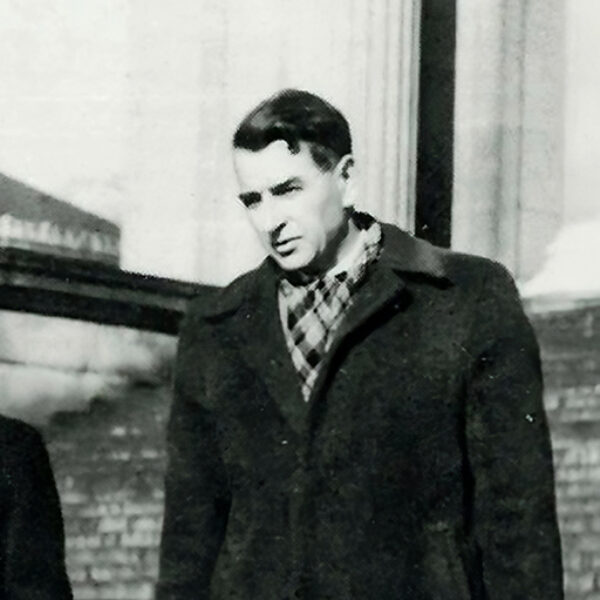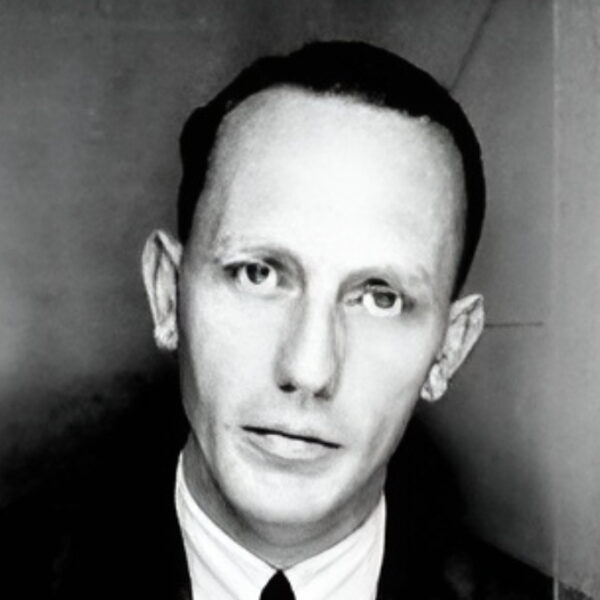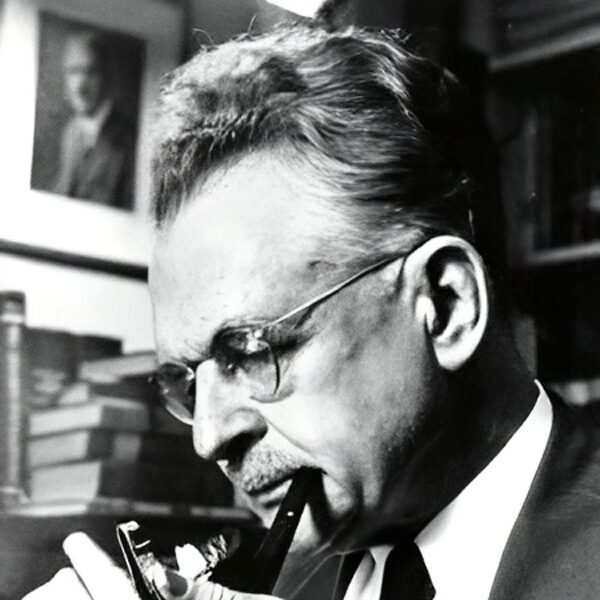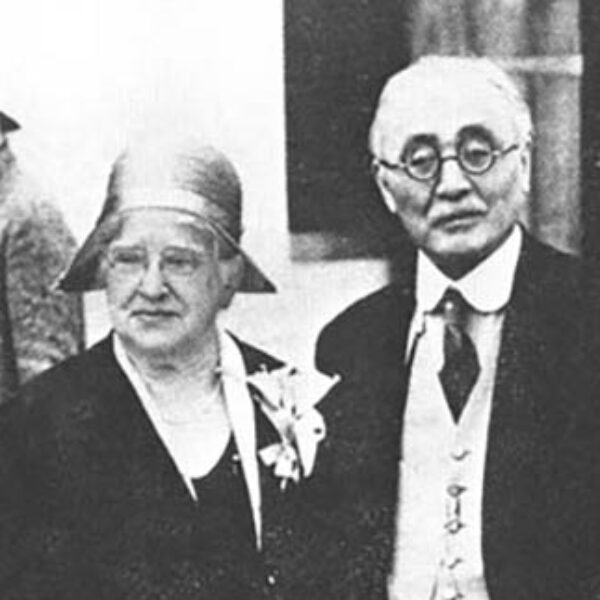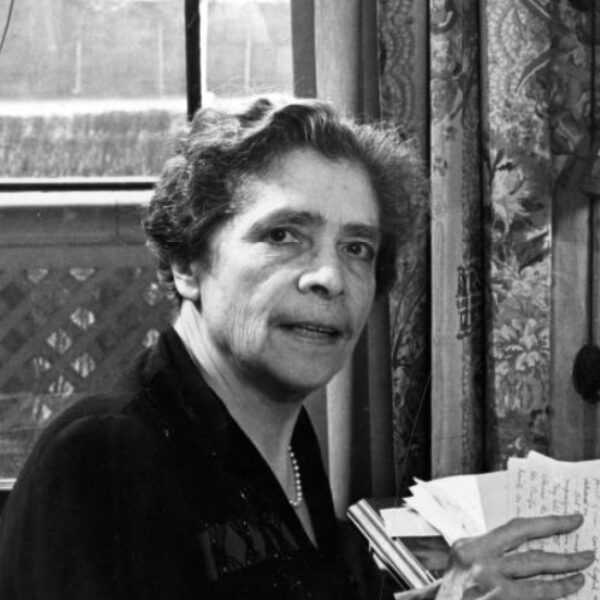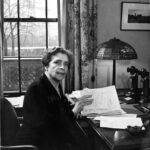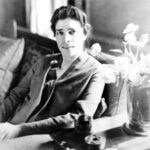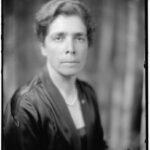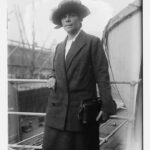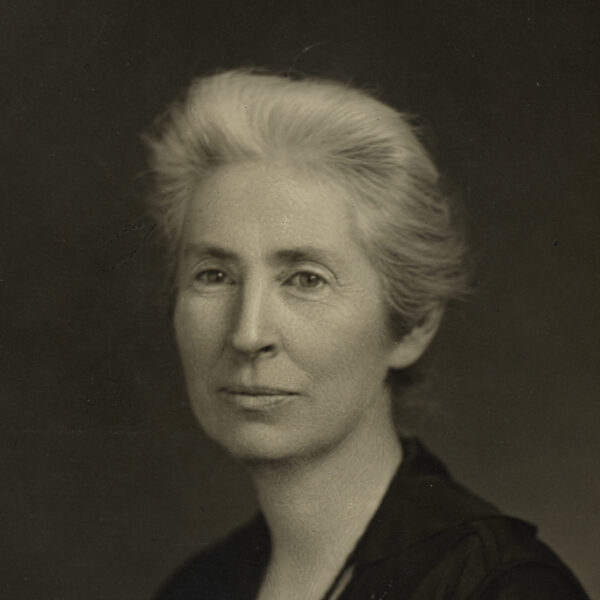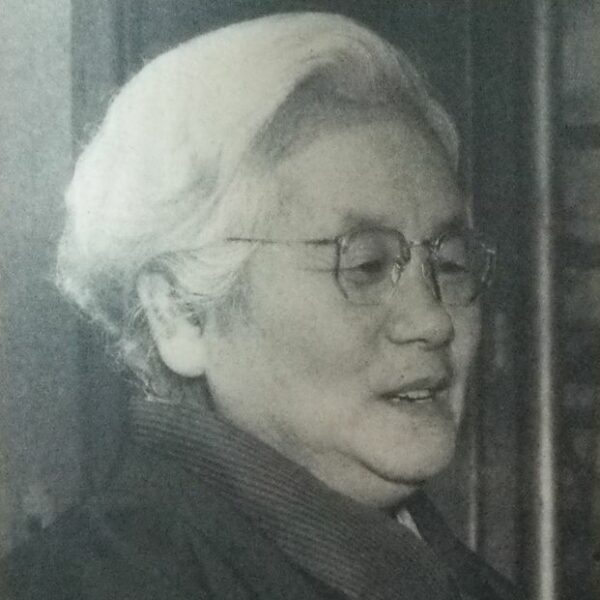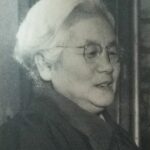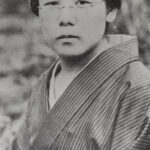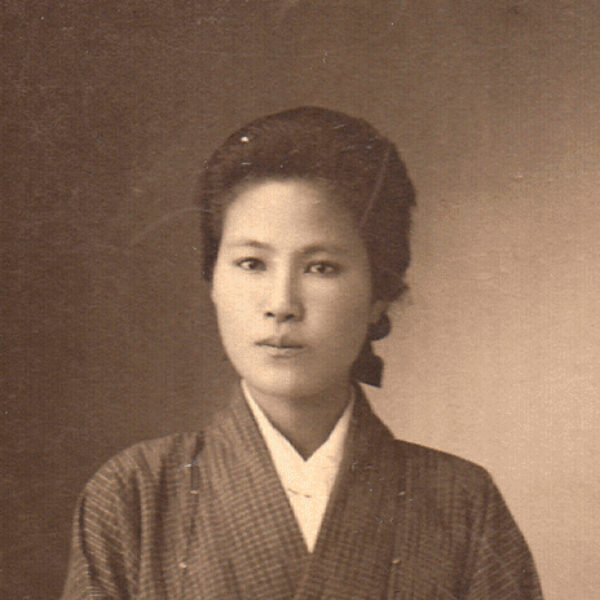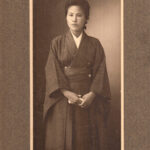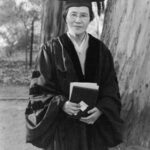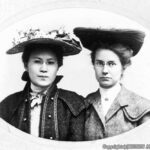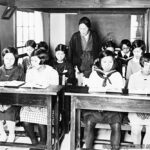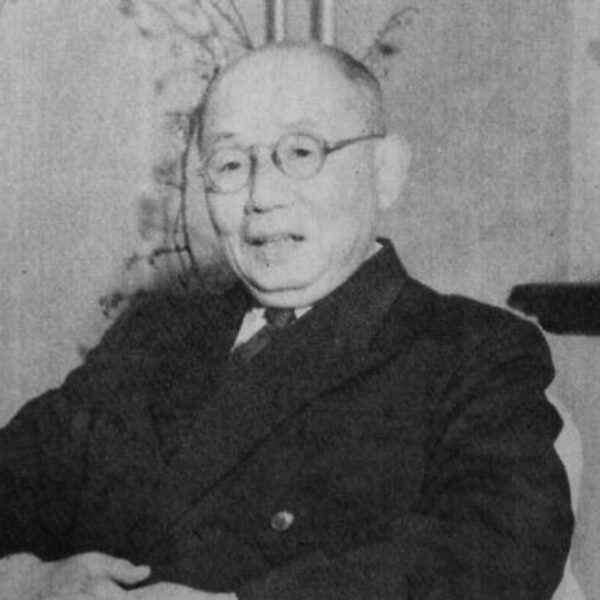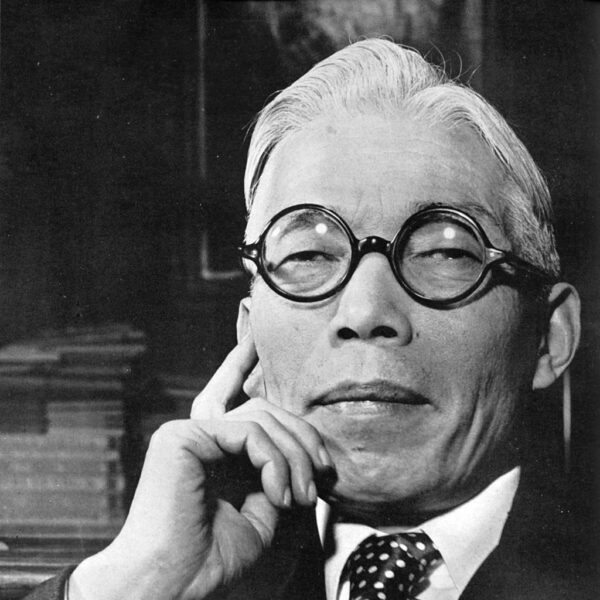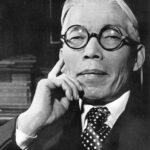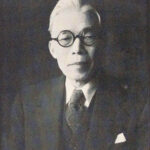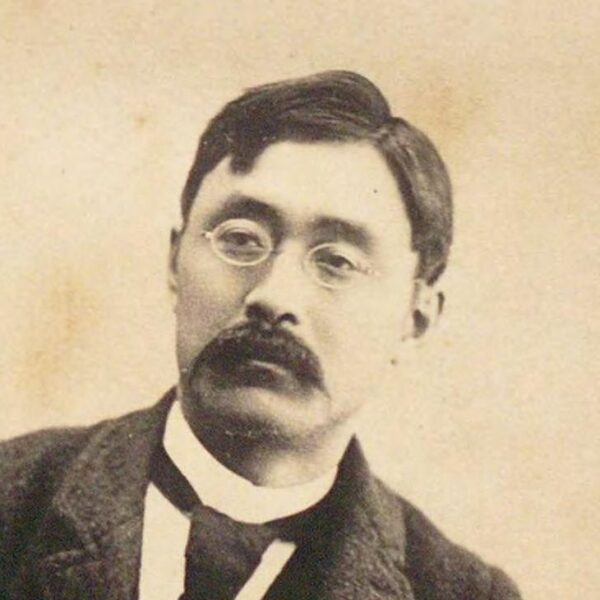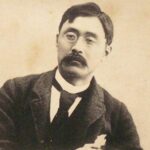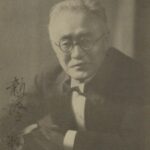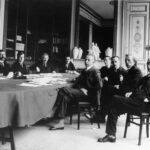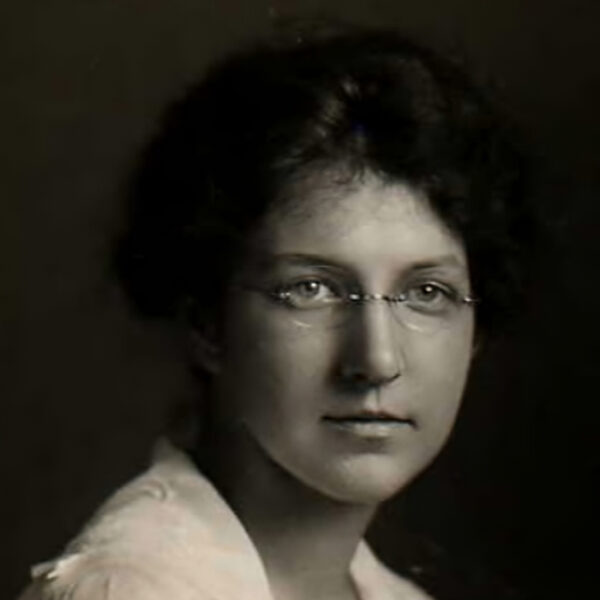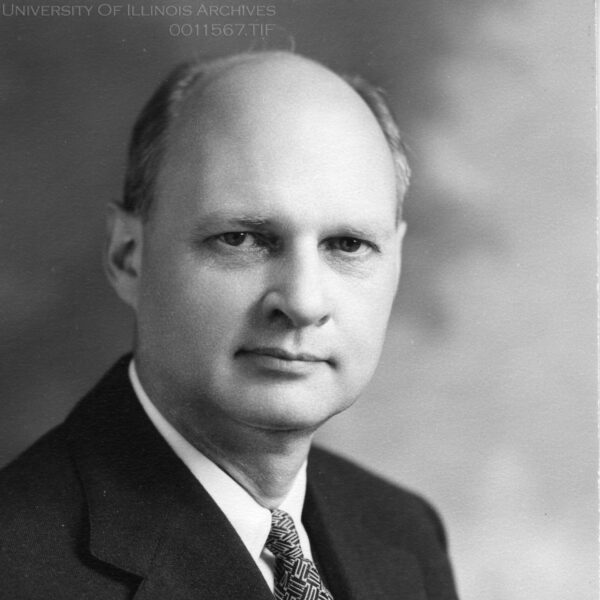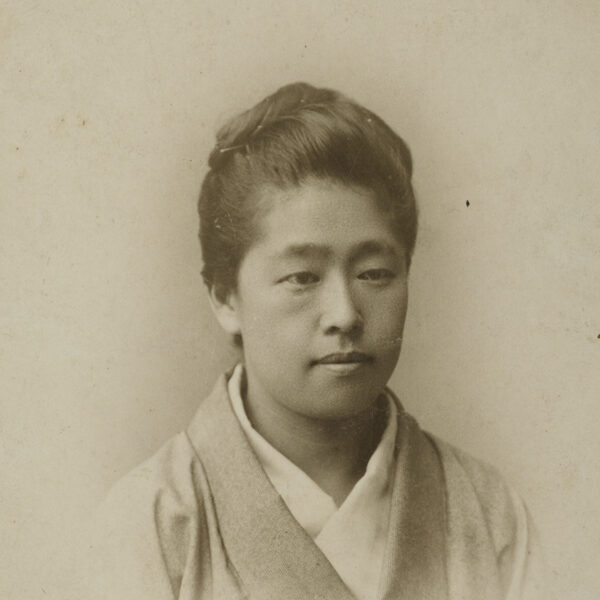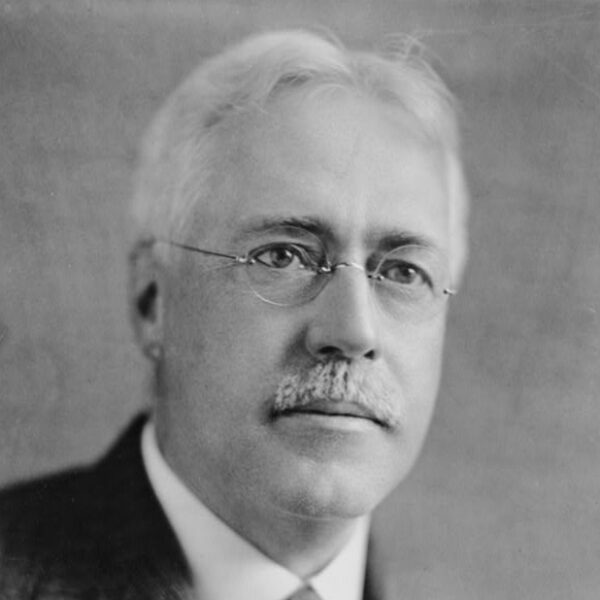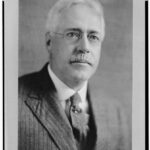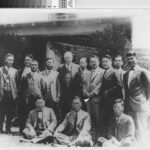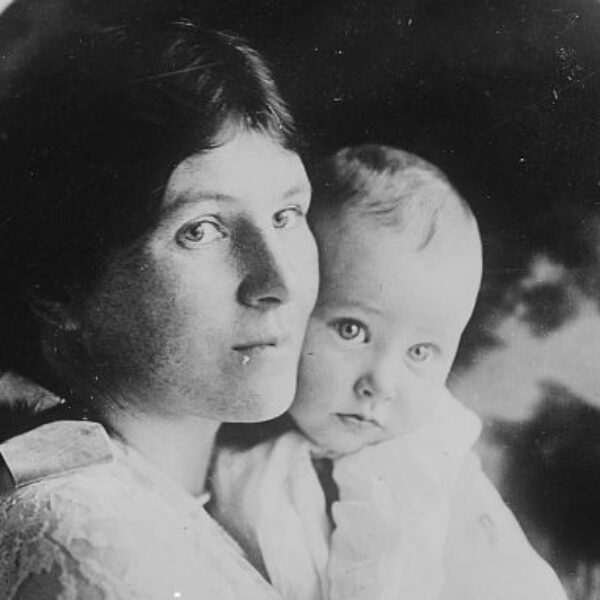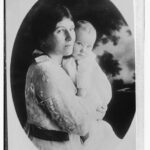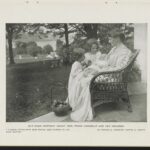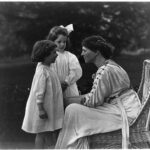Biographies
Hugh Borton (1903-1995) was a Quaker, Columbia University professor and president of the East Asian Institute, and president of Haverford College. He worked on Japan in a variety of capacities over the course of a long career in government and academia. Before his first trip to Japan as a missionary in the 1930s however, he was urged by Ambassador and Consul General in New York, Setsuzo Sawada, to “listen and learn” upon his arrival in the country. Borton took the advice to heart and became one of the most influential American academics helping to shape policy towards Japan after the end of WW2.
Hugh Borton (1903-1995)
Gordon Bowles (1904-1991) was a Quaker and a member of the 1946 U.S. Education Mission to Japan. He grew up in Tokyo and received his Ph.D. in anthropology from Harvard in 1935. Prior to the Mission, he contributed extensively to prewar planning for the Japanese school system in the event of an Allied victory. During the Mission, he played a crucial role as one of the few American members who was an expert on Japan. After the occupation, he became a professor of anthropology at Syracuse University.
Gordon Bowles (1904-1991)
George S. Counts (1889-1974) was a professor at Columbia University and a member of the 1946 U.S. Education Mission to Japan. He was an influential educational theorist and an early proponent of the progressive education movement. He also helped found the Liberal Party and ran for the U.S. Senate from New York in 1952.
George Counts (1889-1974)
Mary Elkinton (1857-1938) was an American Quaker and the wife of Nitobe Inazo. Mary and the rest of the Elkinton family were staunch supporters of Japan and the many Japanese students who came through Quaker networks beginning in the late 19th century. Nitobe and Mary facilitated the study of many Japanese students in the U.S., including prominent figures such as Kawai Michi and Ai Hoshino, both of whom received scholarships from the Quaker community.
Mary Elkinton (1857-1938)
Virginia Gildersleeve (1877-1965) was an New York academic, dean of Barnard College, and co-founder of the International Federation of University Women. In 1945, she was the sole woman delegated by the United States to the San Francisco UN Conference on International Organization, which led to the creation of the United Nation. She joined the U.S. Education Mission to Japan the next year.
Virginia Gildersleeve (1877-1965)
Anna Hartshorne (1860-1957) was an American educator, author, and member of an influential Philadelphia Quaker family. Along with Umeko Tsuda, she co-founded Tsuda College and served as an educator at the school from 1902 to 1940. After the 1923 Great Kantō earthquake destroyed the school, she toured the United States to raise funds for its reconstruction.
Anna Hartshorne (1860-1957)
Ai Hoshino (1884-1972) was a prominent Japanese academic who received her postgraduate education in New York City, served as president of Tsuda College, and was instrumental in securing official university status for women’s institutions of higher learning in the postwar era. Hoshino originally came to the United States in 1906 under Quaker sponsorship after graduating from Tsuda College. She later presided over the college through its reconstruction after the Great Kanto Earthquake and the uncertainty of World War II.
Ai Hoshino (1884-1972)
Michi Kawai (1877-1953) was an educator and internationalist who founded the Keisen Girl’s School (the forerunner of today’s Keisen University) and the Japanese branch of the Young Women’s Christian Association (YWCA). After graduating from Bryn Mawr College in Pennsylvania in 1904, she returned to Japan and taught at Tsuda College (originally known as the Women’s English School). She later co-founded and served as the first National Secretary of the Japanese YWCA. In 1927, she founded the Keisen Girls School in Tokyo, which emphasized Christian and international studies–subjects that had been important to her since her early years with the Quakers.
Michi Kawai (1877-1953)
Tamon Maeda (1884-1962) was the Director of the New York Japanese Cultural Association and later Japan’s first postwar Minister of Education. He advocated a number of liberal education reforms after the war, including the abolition of regimental education and the strengthening of science education, and supported the 1946 U.S. Education Mission. Other reforms, such as placing the emperor at the center of moral education, were considered too conservative by occupation administrators.
Tamon Maeda (1884-1962)
Shigeru Nanbara (1889-1974) was president of Tokyo Imperial University and headed the Committee of Japanese Educators during the 1946 U.S. educational mission to Japan. In 1946, Nanbara was one of the members of the House of Councillors who deliberated on the Japanese Constitution, and in 1947, Nanbara was elected chairman of the Education Reform Council. He served as the first president of the Japanese Political Science Association in 1948 and as president of the Japan Academy in 1970.
Shigeru Nanbara (1889-1974)
Inazo Nitobe (1862-1933) was a Japanese Quaker, intellectual, and public figure who was widely known in the Western world for his writings on both Japanese culture and the international world order. After a visit to Philadelphia in 1885 at the invitation of the Women’s Foreign Missionary Association of Friends, Nitobe formally became a Quaker and advised the founding of the Friends Girls School in Tokyo in 1887. He also supported Umeko Tsuda in her efforts to build Tsuda College, and later helped found the Tokyo Woman’s Christian University, serving as its first president.
Inazo Nitobe (1862-1933)
Esther Rhoads (1896-1979) was an American educator and member of an influential Quaker family from Philadelphia. She taught at the Friends Girls School in Tokyo between 1917 and 1940. After World War II, she returned to the school to serve as its principal. She was also selected to tutor Crown Prince Akihito and other members of the royal family between 1950 and 1960.
Esther B. Rhoads (1896-1979)
George Stoddard (1897-1981) was the head of the 1946 U.S. Education Mission known as the “Stoddard Mission”. At the time of the mission, Stoddard served as the New York State Commissioner of Education. His other positions included vice president of New York University, president of Long Island University, and president of the University of the State of New York, the forerunner of the State University.
George Stoddard (1897-1981)
Umeko Tsuda (1864-1929) was a pioneer in the field of women’s education. She was one of the first female Japanese exchange students in the United States at the age of six, and later attended Bryn Mawr College in Philadelphia and St Hilda’s College in Oxford. Upon her return to Japan, she worked to raise awareness of the need for women’s education and founded Tsuda College (originally known as the Women’s English School) in Tokyo.
Umeko Tsuda (1864-1929)
Frank Vanderlip (1864-1937)
Narcissa Cox Vanderlip (1879-1966) was a New York suffragist and outspoken supporter of the Japanese feminist movement. A trip to Japan in 1920 confirmed her belief that international solidarity was necessary to advance feminist causes, and she became personally involved in women’s movements in Japan. To this end, she chaired the New York branch of the Tsuda College Emergency Committee and successfully raised funds to rebuild Tsuda College.
Narcissa Cox Vanderlip (1879-1966)

